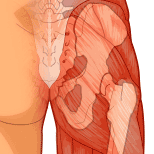A review about PhysioActive Physiotherapy Clinic, in South Jakarta.
My name is Frank Moniaga, 76 yrs., and a member since 8 weeks. I joined a couple of days after being released from the hospital, post my total left hip replacement and it is a pleasure to share my positive experience.
After I booked, gone thru the first stage of 10 sessions at the clinic and at home doing my daily web-guided exercises, it is amazing how quick I experience recovery in regaining motion, function, strength, balance and control on most of my body movements. With my trainer therapist, we established a target right from the beginning of me being able to go back to the tennis- and golf-course after the 10th. week. After this first stage and despite the fast recovery, I still decided to continue with a few more sessions in order to make sure, that the new replacement joint is united with my body in the right and natural way.
Now having still a few sessions to go and with my daily web-based training being regularly stepped up, I must say that this physio-therapeutic rehabilitation program at Physio Active, Jakarta has been worth the investment. My trainer therapist, a friendly well trained young professional, educated at an international well known institution abroad, has not only given me back my body movement but also a comprehensive understanding about the anatomy, physiology and its relationship to the human body. This in turn has formed in me an important part of my motivation to keep on doing these boring physio-exercises.
And last but not least, the clinic is modernly well equipped, clean and its staff nice, friendly and pleasant.
Jakarta, January 24’22.



